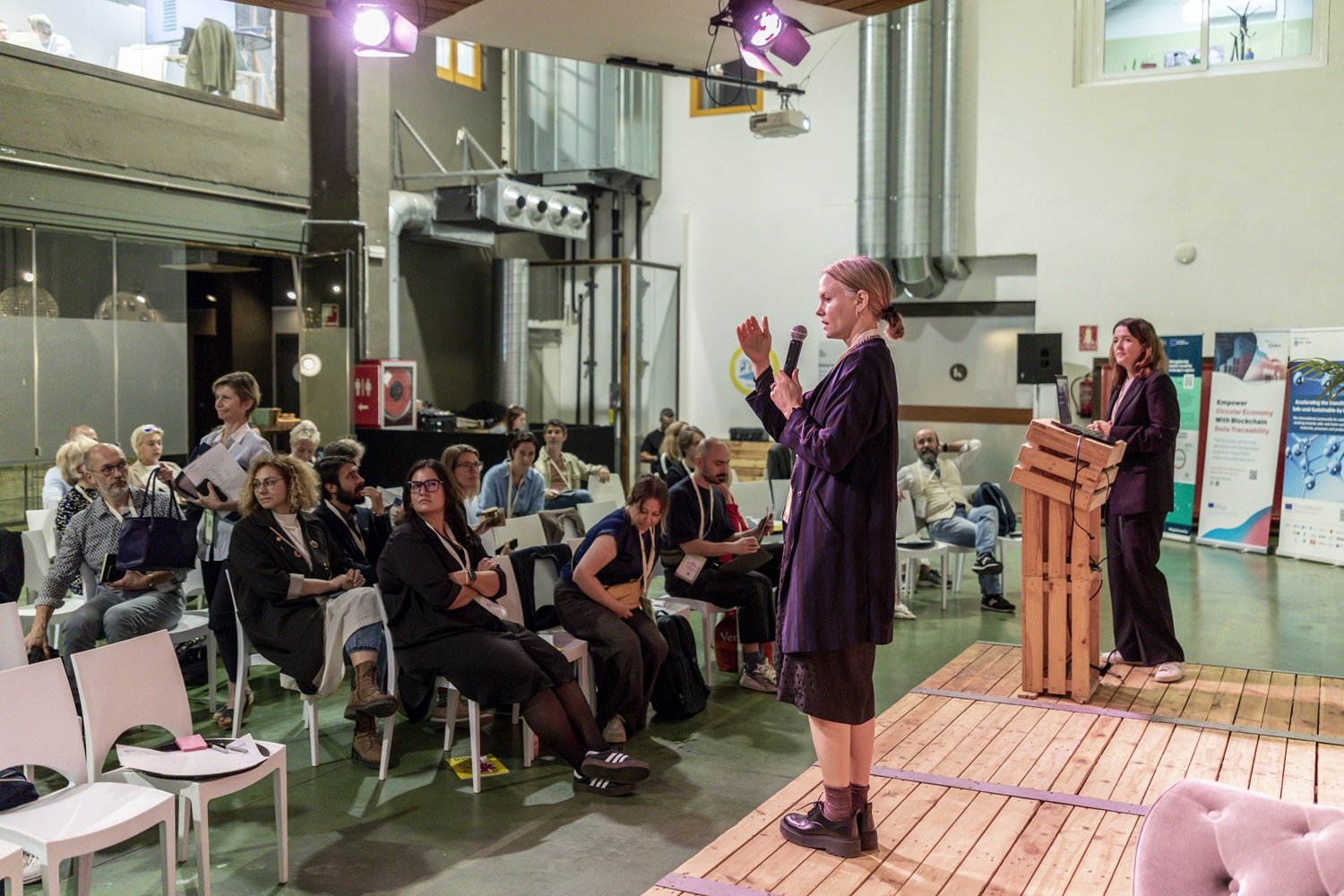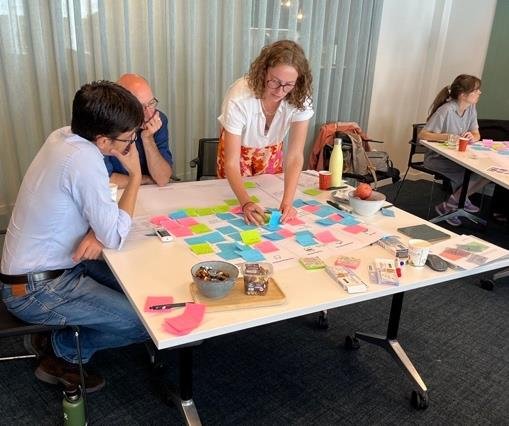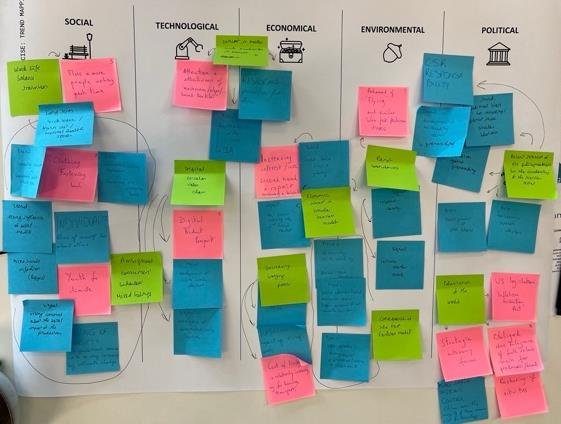Unlocking the Future of Sustainable Textiles: Navigating Europe's Circular Revolution




In March 2022, the European Commission set a bold course for the future of textiles with its EU strategy for sustainable and circular textiles. This visionary plan, part of the broader 2020 Circular Economy Action Plan, charts a course for Europe to revolutionise its textile waste management. By improving waste management practices and cultivating more sustainable consumption habits, the strategy aims to reshape the very fabric of Europe's textile industry.
In Spring 2024, CISUTAC released a comprehensive report, developed by partners from RISE and Centexbel (with support from Wargön Innovation, Wageningen University, RREUSE, Texaid, AIMPLAS, TEXFOR, ACR+, EURATEX and Textile ETP), titled "Circular Transition Scenarios & Software for Post-Consumer Textile Waste Channelling" (Deliverable 2.1) that serves as a guiding compass, offering insights into various pathways for Europe's textile industry to achieve a circular future.
What will the textile ecosystem look like in 2035? CISUTAC’s scenarios for the future
But how do we swiftly transform the textile waste system and forge a circular value chain that maximises benefits for Europe? The EU strategy's ambition wants to stem the tide of rampant consumption by encouraging longevity in garment lifespans, and to scale up the fibre-to-fibre recycling industry within Europe. However, envisioning a desirable future and circular value chain demands a multifaceted approach, and the best way to be prepared is to imagine multiple possibilities. Hence, CISUTAC explored four distinct future scenarios:
In Scenario A: “Slowing down – a new paradigm of sustainable fashion goes global”, the European textile industry faces global challenges with difficulties in scaling recycling technologies and rising production costs. Brands restructure supply chains, emphasising quality, and consumers shift towards the slow fashion movement, reshaping the industry.
Scenario B: “The fast fashion paradox – material recycling becomes big business” sees the persistence of fast fashion amid resource concerns, with significant investments in recycling technologies and reliance on both virgin materials and recycled ones. The EU engages in cotton-as-a-service agreements to address resource challenges, fuelling a global competition for sustainable raw materials.
In Scenario C: “Quality exclusives – the cornerstone of European circular value chains”, EU policymakers implement economic disincentive schemes to promote quality and durability over fast, disposable trends. Regional infrastructure and digitalised production revolutionise local efforts, though fashion becomes a luxury for some due to higher prices.
Scenario D: “Stream your wardrobe – subscription models disrupt fast fashion” witnesses a transformation driven by subscription models, shifting consumer perceptions towards temporary ownership and worry-free fashion consumption. Brands transition to leasing models, leveraging vast amounts of data to enhance subscription services and driving demand for green energy solutions.
The road to transformation is full of complexity and uncertainty. Thus, these scenarios serve as invaluable tools, not only for decision-makers but also for bolstering the textile ecosystem’s capacity to plan effectively and spark questions. By future thinking and balancing both successes and failures, they pave the way toward realising the EU textile strategy's objectives.
Navigating the Current Landscape of Textile Waste Management
Examples of data from the CISUTAC report.
A critical aspect of the sustainable transformation is rooted in our understanding of the current textile waste management landscape. The CISUTAC report offers a comprehensive overview, focusing on the nuances of available waste streams for reuse and recycling, sorting capacities, and material compositions. Yet, a gap persists: the lack of sufficient and reliable market data. Without accurate data, setting targets to steer the transformation becomes more difficult.
Examples of data from the CISUTAC report.
The gap analysis underscores the pressing need to double, if not quadruple, the capacity for collecting and sorting textile waste by 2030. Ultimately, the CISUTAC report highlights the pivotal role of regional stakeholder networks in catalysing the transition to a circular system. Despite geographical disparities, there is a fertile ground for cultivating circular value chains across Europe. But realising this vision requires concerted efforts to harness the collective expertise and resources of stakeholders across the continent.
Helping the textile ecosystem make informed decisions, driving a digital change in line with the digital product passport, & enabling more accurate feedstock for the industry: CISUTAC's solution for post-consumer textile waste management!
As Europe embraces a more sustainable and digitised future, regulatory frameworks (such as eco-design requirements, digital product passports, and other directives empowering consumers for green transitions) are brought forward. Automation emerges as a key tool to enhance waste channelling processes’ efficiency and accuracy.
CISUTAC's solution for post-consumer textile waste management
Central to CISUTAC's activities was the development of an open-source decision support tool, tailored for post-consumer textile waste management. With the tool, CISUTAC explored the current and future potential to channel waste, to reuse and recycling supported by Digital Product Passport (DPP) and complementing technology. The most prioritised datapoints to channel post-consumer waste are identified to be condition (one of the key datapoints that channel waste from either reuse or recycling), product construction, multilayer, chemical content, fibre composition, recycled content, textile finishing, fabric colour and disruptors.
By helping stakeholders understand the main datapoints and principles for channelling routes and the potential of the Digital Product Passport in the sorting process, the tool empowers them to take next steps with testing how technology can improve channelling of waste to reuse and recycling. It also underscores the imperative of granular information on item-level to drive fibre-to-fibre recycling initiatives forward, and to harmonise datapoints definition on a European (or global) level, considering some could be difficultly handled with the DPP (i.e. condition).
There is no silver bullet. The future needs the right technology mixes for detecting multiple data points. There will be a longer period of overlap, where articles not adapted for the circular loops will need to be handled together with an increasing volume of articles fit for circular loops. This raises challenges for capacity building in the industry to manage a transition time where products not produced for the circular value chain and lacking structured information about the article coexist with products that have.
In essence, the report provides a roadmap for Europe's textile industry, encompassing analysis of the current landscape, future scenarios, and a decision support tool. As Europe embarks on this transformative journey, one thing remains abundantly clear: the future of textiles is circular, and the time for action is now.





